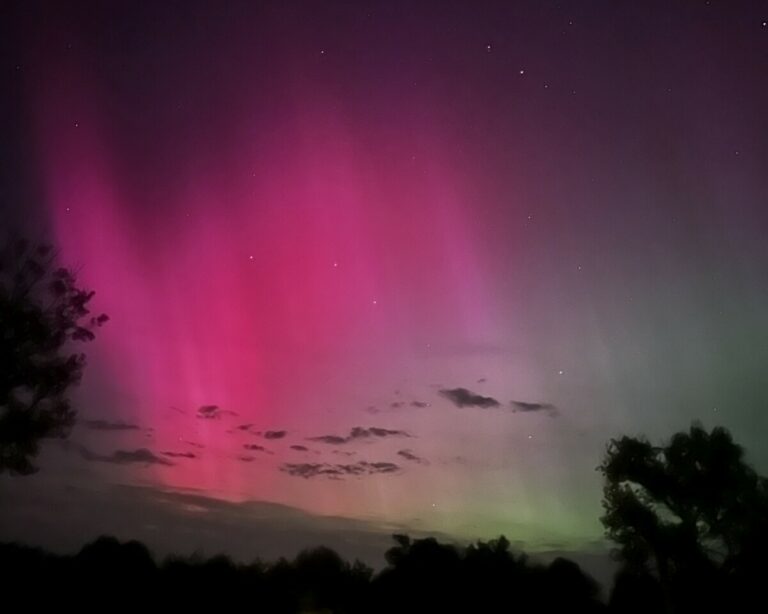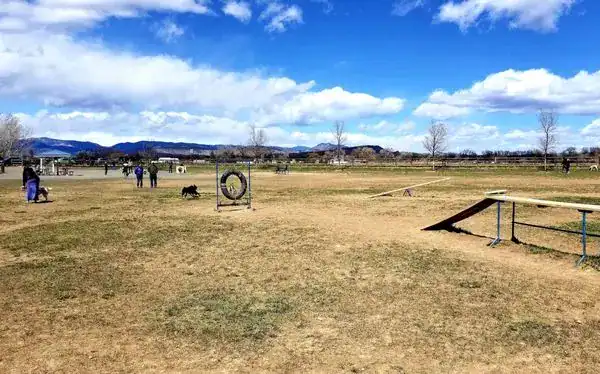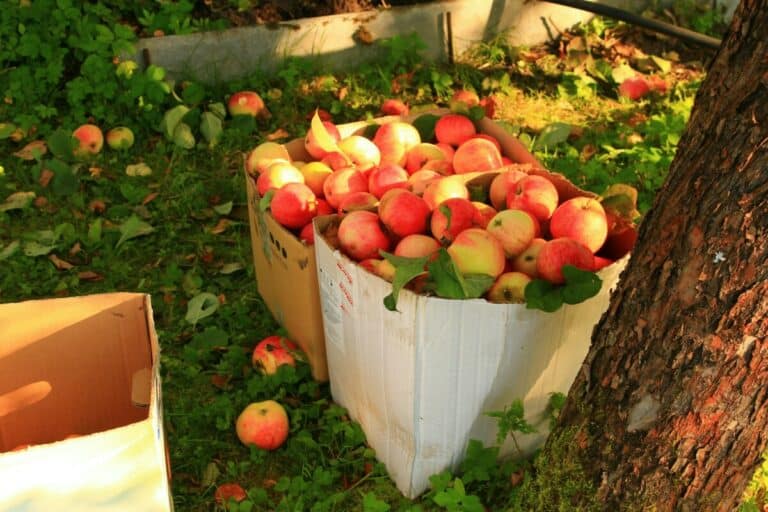The Best Xeriscape Plants for Colorado
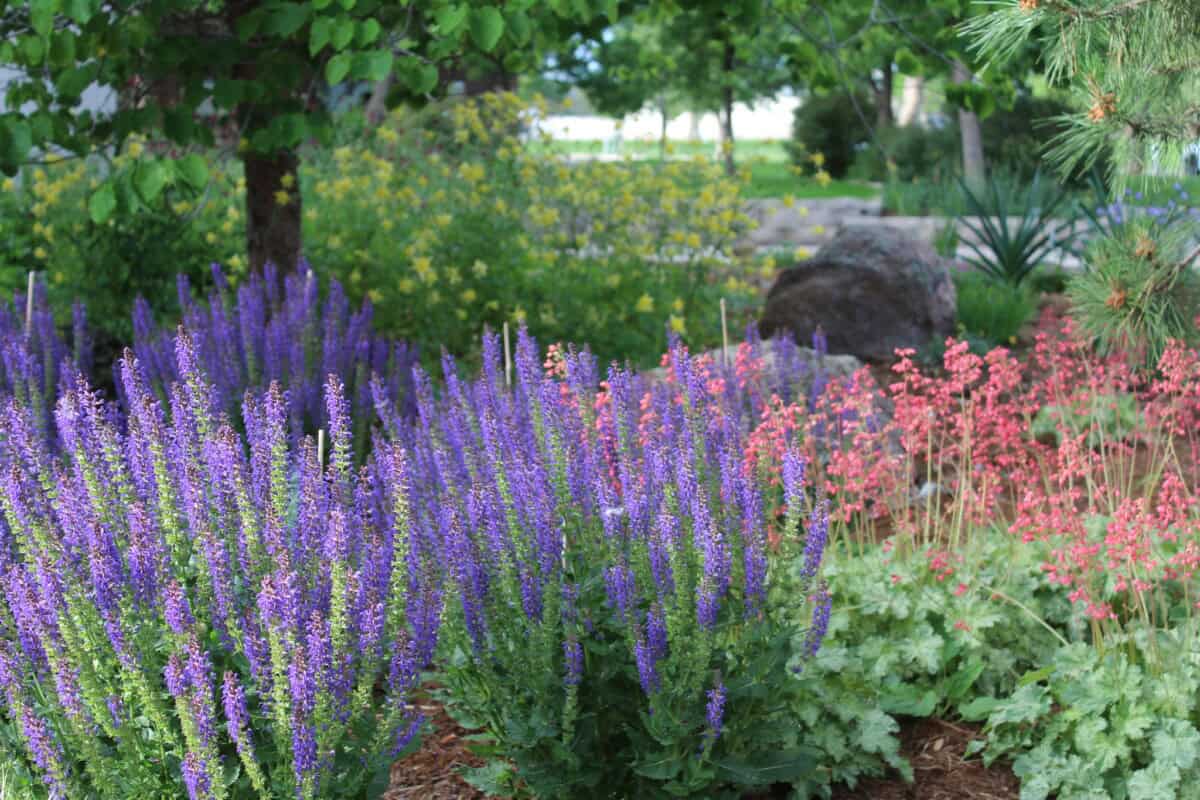
Xeriscaping is a landscaping approach designed for dry regions, and it’s especially valuable in Colorado’s semi-arid climate. Unlike traditional lawns that demand constant watering, xeriscaping uses xeriscape plants that thrive with minimal irrigation. This method makes it both eco-friendly and cost-saving.
Incorporating xeriscape plants into your yard helps you conserve water, cut maintenance, and keep it colorful year-round. This article will highlight the best xeriscape plants Colorado gardeners can use, share practical design ideas, and answer common questions to help you succeed.
Why Xeriscaping Matters in Colorado
Colorado’s semi-arid climate makes water a limited resource, and much of the state depends on the shrinking Colorado River for supply. With low annual precipitation, traditional lawns can quickly become unsustainable.
By using xeriscape plants, homeowners can dramatically reduce their outdoor water needs. Research shows that xeriscaping can save 25 to 60% of household water, making it one of the most effective strategies for conservation.
Environmental & Health Benefits
A well-planned xeriscape cuts reliance on pesticides and fertilizers, improving soil health and local ecosystems. Many xeriscape plants attract pollinators like bees and butterflies, while also reducing exposure to triggers such as pollen allergy symptoms.
Resilient landscapes also provide stability during climate challenges, especially in a state where wildfire smoke is common each summer.
Economic & Lifestyle Benefits
Xeriscaping also pays off financially. Lower water bills and reduced lawn maintenance save homeowners time and money. Many Colorado cities support this shift with rebates and turf replacement incentives, making eco-friendly landscapes more affordable. The result is a yard that’s both budget-friendly and better aligned with Colorado’s climate realities.
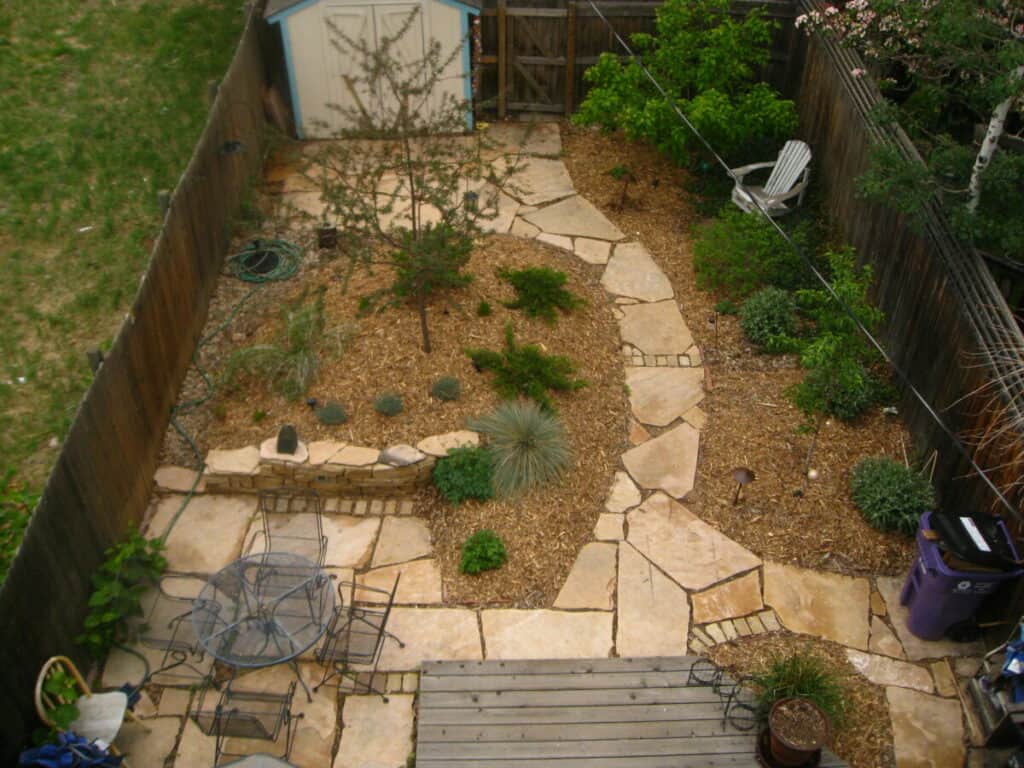
The Best Xeriscape Plants for Colorado
Native Trees
- Colorado Blue Spruce: Stands out with striking silver-blue needles and thrives in Colorado’s climate.
- Ponderosa Pine: Grows tall, offering reliable shade and valuable wildlife habitat.
- Quaking Aspen: Known for its shimmering leaves and ability to stabilize soil on slopes.
Together, these trees provide shade, character, and essential ecological benefits for any Colorado xeriscape.
Native Shrubs
- Rabbitbrush: Bursts with golden flowers late in the season and attracts pollinators.
- Three-leaf Sumac: Adaptable and adds vivid red color in the fall.
- Wax Currant: Thrives in poor soils and produces berries that support wildlife.
- Gambel Oak: Forms thickets that help prevent erosion and provide shelter for birds.
These shrubs are durable, water-wise, and reliable foundations for xeriscaping.
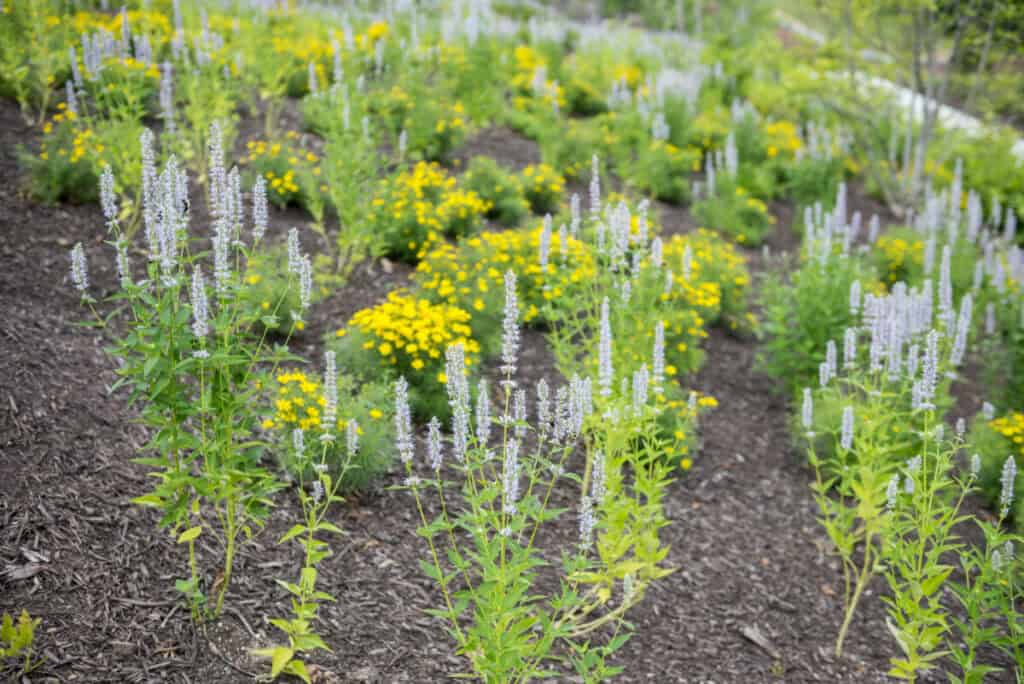
Drought-Tolerant Flowers & Perennials
- Purple Coneflower: Attracts bees and butterflies with long-lasting blooms.
- Echinacea: Supports pollinators while adding bold seasonal color.
- Yarrow: Thrives in poor soils with hardy, fernlike foliage.
- Coreopsis: Brightens borders with cheerful yellow flowers.
- Lavender: Provides soothing fragrance, adapts well to dry conditions, and is usually left alone by deer.
Together, these drought tolerant plants Colorado gardeners love keep landscapes lively from spring through fall.
Ornamental Grasses & Groundcovers
- Ice Plant: Spreads quickly with bright, colorful blooms and needs little water.
- Corsican Violet: Adds purple flowers and works well in shaded spots.
- Korean Feather Reed Grass: Brings texture and turns golden in the fall.
- Dog Tuff Grass: Tough enough for pets, sun, and heavy foot traffic, making it a solid turf alternative.
These choices add structure and beauty to a xeriscape with minimal upkeep.
Unique & Striking Choices
- Agave: Features sculptural leaves that add drama to rock gardens.
- Yucca: Thrives in poor soils with spiky foliage and tall white blooms.
- Sand Dune Gaillardia: Produces yellow-and-purple flowers that brighten sandy landscapes.
These plants bring bold shapes, vibrant color, and resilience to any yard.
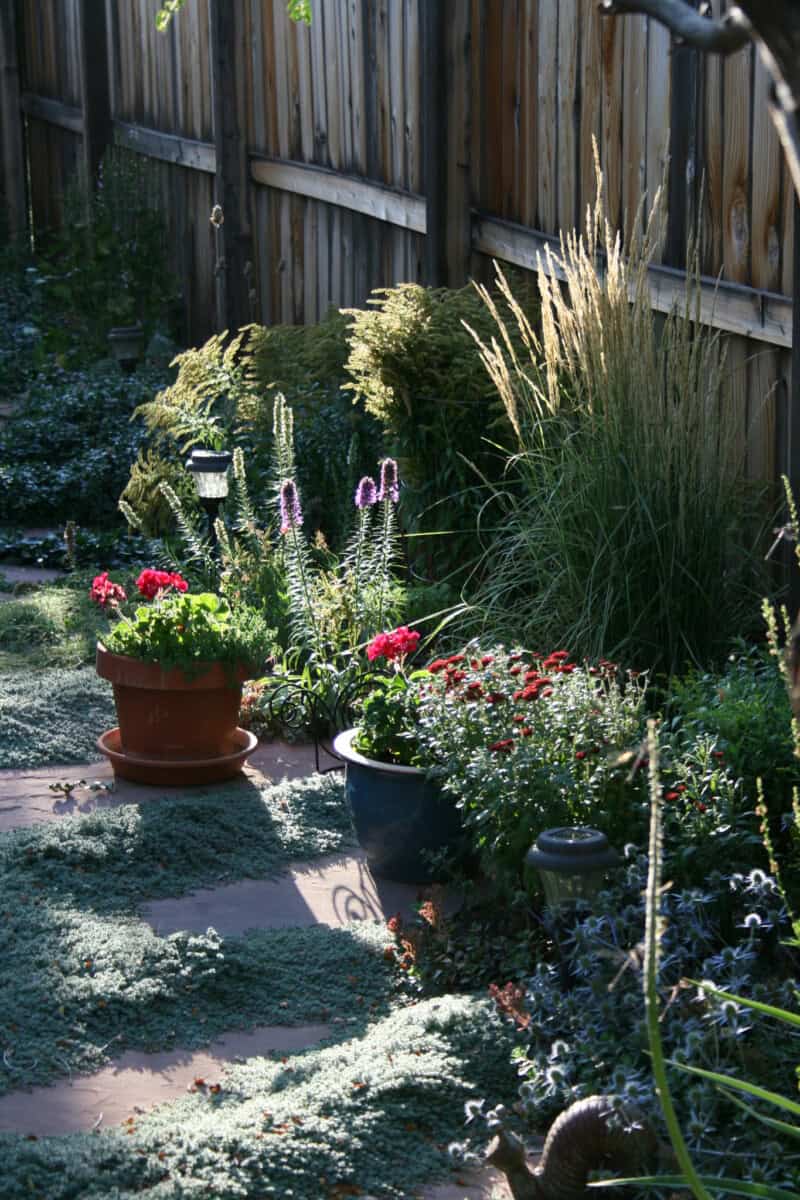
Practical Xeriscape Colorado Ideas
Planning & Design
A successful colorado xeriscape begins with smart planning. Hydro-zoning, or grouping plants with similar water needs, keeps irrigation efficient. Replacing thirsty turf with gravel, mulch, or stone pathways conserves water while adding structure and contrast. Like the efficient layout of apple orchards near Longmont, careful planning ensures your xeriscape is both practical and beautiful.
Soil & Maintenance
Colorado soils are often sandy or clay-heavy, which makes root growth difficult. Improve conditions by adding compost or organic matter to boost water retention and soil structure. Once established, most xeriscape plants need minimal irrigation, relying mainly on natural rainfall. This means less time spent watering and more consistency in plant health. Simple practices like mulching around plant bases also help retain moisture and reduce weeds.
Seasonal Interest
A xeriscape doesn’t have to be static. By mixing plants with staggered blooming times, you can ensure fresh color from spring through fall. Combining seasonal flowers with evergreens ensures your xeriscape remains dynamic and appealing throughout the year, proving that water-wise gardens can be just as lively as traditional ones.
FAQs
What are the easiest xeriscape plants for Colorado beginners?
Beginner-friendly choices include lavender, yarrow, rabbitbrush, and coneflowers. They thrive in Colorado’s climate and need little care.
Do xeriscape gardens attract pollinators and wildlife?
Yes. Plants like echinacea, coreopsis, and native shrubs attract bees, butterflies, and birds.
Can xeriscaping help reduce maintenance and lawn care costs?
Yes. Less turf, fewer chemicals, and minimal irrigation save both time and money.
How do I combine native and non-native drought tolerant plants in my yard?
Group plants with similar water needs. Mix natives like rabbitbrush with adapted plants such as lavender.
Are there financial rebates for xeriscaping in Colorado?
Yes. Many cities (including Longmont) provide rebates and turf replacement programs, making xeriscaping affordable and eco-friendly.

